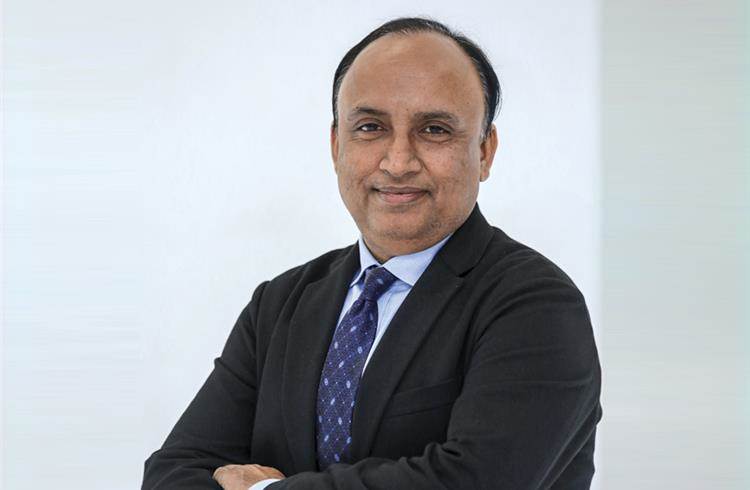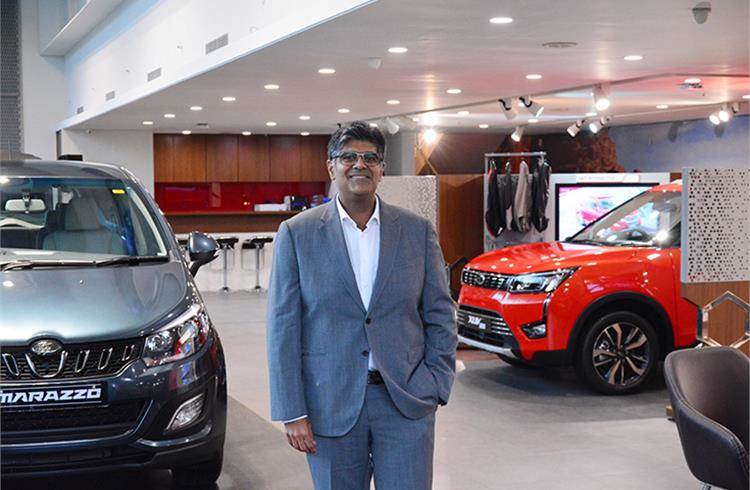The initial euphoria following the post Covid-19 market recovery for the automotive markets seems to be subsiding now. Tell-tale signs are evident. A slowing economy, rising interest rates, high inflation and swelling vehicle prices have already dampened the demand momentum for the industry.
Even with chip supplies improving and production has been back to normal, the pent-up demand appears to have dried up and the market has come back to fundamentals of economic growth.
With the World Bank and Asian Development Bank revising the GDP growth downwards, the impact is likely to be seen in the automotive market too.
According to market leader Maruti Suzuki, the Indian market is set to grow between five and seven percent in the current financial year, having posted over 27 percent growth in the last financial year. The likes of Crisil, ICRA, ICICI Securities amongst others have forecasted the market to grow between five and eight percent.
 “There are multiple red flags, uncertain effects of global economic trends, hardening interest rates, inflation and fears of El-Nino”: Shashank Srivastava, SEO, Sales/Marketing, Maruti Suzuki India.
“There are multiple red flags, uncertain effects of global economic trends, hardening interest rates, inflation and fears of El-Nino”: Shashank Srivastava, SEO, Sales/Marketing, Maruti Suzuki India.
Shashank Srivastava, Senior Executive Officer, Sales and Marketing at Maruti Suzuki says there are multiple red flags like uncertain effects of global economic trends, hardening interest rates, inflation, fears of El-Nino and its potential impact on the monsoon and drop in rural incomes.
“There have been back-to-back price increases taken in January and April, one will have to watch how the prospective buyers absorb these price hikes. The uncertain economic environment including fluctuations in commodities prices due to geopolitical situations and continued semiconductor shortages may also have an impact. So far, for us, the enquiry and booking levels are holding up well, there are some signs of softening, but thanks to new models our bookings have crossed 3.9 lakh,” added Srivastava. While the enquiry levels are holding up well across car makers, the enquiry to conversion ratio is falling and the journey from vehicle booking to real delivery or retail has also started to take longer.
Rohan Kanwar Gupta, Vice President of rating agency ICRA says the increase in borrowing costs over the past few months coupled with the high vehicle prices have also led to higher cost of ownership, and the impact of the same on enquiries/consumer interest remains monitorable.
“Additionally, given that there are concerns regarding the probable occurrence of El Nino during the upcoming south-west monsoon season and its adverse impact on rural sentiments/economic growth, there exists a downward bias to the growth estimate,” added Gupta.
To be sure, the struggle in the non-SUV segment has been quite visible for the last two fiscal years, as the disposable income at the bottom end of the pyramid had not come back to pre-Covid-19 levels, thereby hampering growth prospects in the entry car segment in the country. It was the well-to-do middle and upper middle class’s frenzied buying for personal mobility, especially SUVs, that took the market to a new peak in FY23.
Ravi Bhatia, President of Jato Dynamics India says, there is a weakness at the lower end of the market as visible from sale of smaller cars and two wheelers. Inflationary challenges and rising interest rates make cars more expensive and EMIs higher. This is a drag on demand. Also, the general inflation is reducing consumer disposable earnings.
While the commodity prices have remained steady, the increased vehicle prices on account of new real driving emission norms or RDE implemented from April 1 too is likely to have an impact. The vehicle prices, which had already seen a spike of 15-25 percent in the last two and half year’s post Covid-19, have seen two price interventions since January.
Hemal Thakkar, Director Consulting, Crisil Market Intelligence & Analytics says with the implementation of compulsory airbags rule in October 2023, the prices are set to go up further and hence the mood for FY24 will be muted. “Growth forecast for PVs would be sub five percent and this is considering normal monsoons forecasted by IMD. We haven’t revised our growth forecasts downwards as of now because the economic scenario continues to hold, and any further deterioration will make us relook at the forecasts. PVs on account of a high base will see significant moderation; however, we are optimistic about EV passenger vehicles and expect the segment to cross one lakh units in FY24,” said Thakkar.
ICICI Securities expects passenger vehicles and two wheelers to grow at a Compound Annual Growth Rate (CAGR) of six to eight percent and 8-10 percent in the next two years, whereas three wheelers and medium and heavy commercial vehicles are expected to grow at 10-12 percent in the next two years.
 “The base has gone up and it is unfair to expect the sustenance of growth of the overall automotive sector or industry to be over 23-24 percent”: Tarun Garg, COO, Hyundai Motor India.
“The base has gone up and it is unfair to expect the sustenance of growth of the overall automotive sector or industry to be over 23-24 percent”: Tarun Garg, COO, Hyundai Motor India.
Tarun Garg, COO of Hyundai Motor India says the base has gone up and it is unfair to expect the sustenance of growth of over 23-24 percent in a recent interview to Autocar Professional. “The growing GDP will continue to support the car market. Our order book is still very strong, but the chip shortage is continuing to impact. There are many global uncertainties — like banks going bust, trade wars etc. We are a little bit concerned about that and we are watching carefully how these factors pan out. Otherwise, the domestic fundamentals are robust, while one cannot sustain 23-24 percent growth, but one can expect a healthy single digit growth in 2023,” added Garg.
The impact is largely seen in the bottom to mid-end of the market, i.e. Rs 10-15 lakh, vehicles priced above that are still witnessing a strong traction, say premium vehicle makers.

Mahindra & Mahindra which has significantly outperformed the market with series of successful products like the Thar, XUV 700 and Scorpio N too has started witnessing some softening in demand for its entry models Bolero Neo and XUV 300, but the demand for its core premium models is still very strong.
Veejay Ram Nakra, President, Automotive Division – Mahindra & Mahindra says, “There are certain brands, which are in the price bracket of Rs 8 to 11 lakh are witnessing headwinds, but the rest of the portfolio continues to maintain the growth momentum. Despite delivery of a higher number of cars, the order backlog is maintained at around 2.7 lakh with no major cancellations.”
Discounts on the rise
The market has witnessed increased deals and discounts over the last one year and even some of the products in the fast-growing segment like SUVs have started witnessing attractive offers underlining the stress in the market. Yet the dealer inventory at 2.1 lakh across the country – which is a three-week stock – is still 75,000 to one lakh units lower than the normal stock level. An order book of over nine lakh units across vehicle makers gives breathing space for the car makers. The pending bookings are easily two to three months of sales for many automakers who are still struggling with chip shortage.
Maruti Suzuki has a pending order book of 3.95 lakh, Hyundai Motor India is at 1 lakh, Mahindra & Mahindra is at 2.7 lakh and rest of the market at another 1-1.5 lakh bookings. Explaining the discount phenomenon, Srivastava says, it is a tale of two cities of the market. One where the models especially SUVs have significant pending bookings but are not able to secure enough supplies and hence, they are on a waiting period and on the other hand, there are models available on discount, as the supplies are more than the demand in the marketplace, hence there are deals and offers.
Despite the softening in demand, it is too early to raise alarm bells, say industry players. The industry order book is still at 7.5 to 9 lakh units and the industry inventory is still at three weeks as against four to five weeks seen historically. “Seen through the lens of recent developments, yes there are signs of softening, but if you look at the historical numbers on all counts, booking, enquiries, discounts, inventory, they are all very comfortable. The high base effect will lead to single digit growth, yet it is over a record high number, so things are not all that bad,” assured Srivastava.
Bhatia believes that new model launches, and aggressive sales campaigns will continue to support sales and there are still consumers who are willing to purchase new vehicles, despite long waiting periods, although there will be some cancellations of backlogged orders.
This feature was first published in Autocar Professional’s April 15, 2023 issue.
